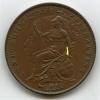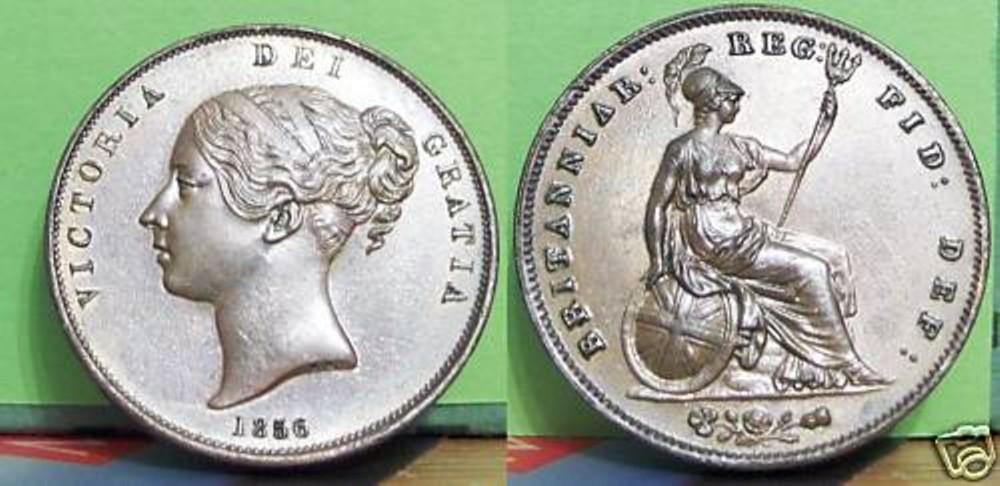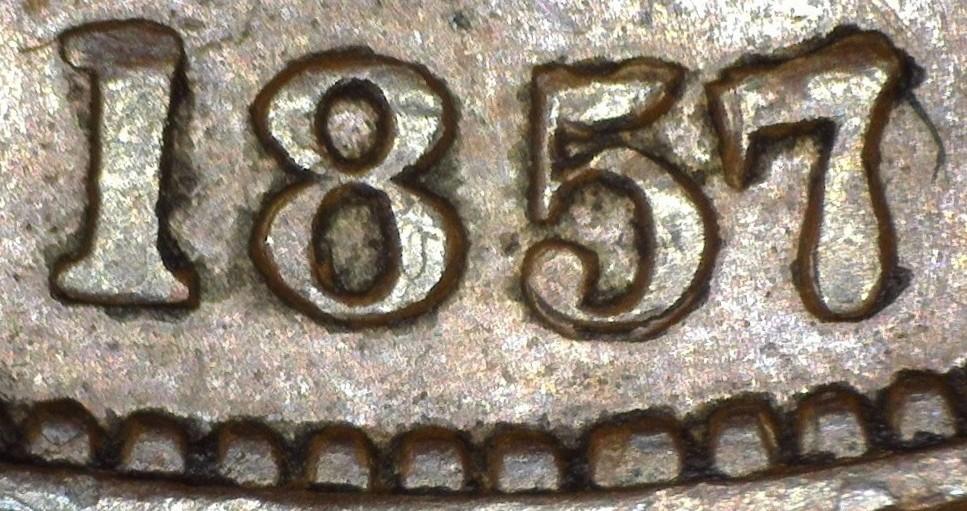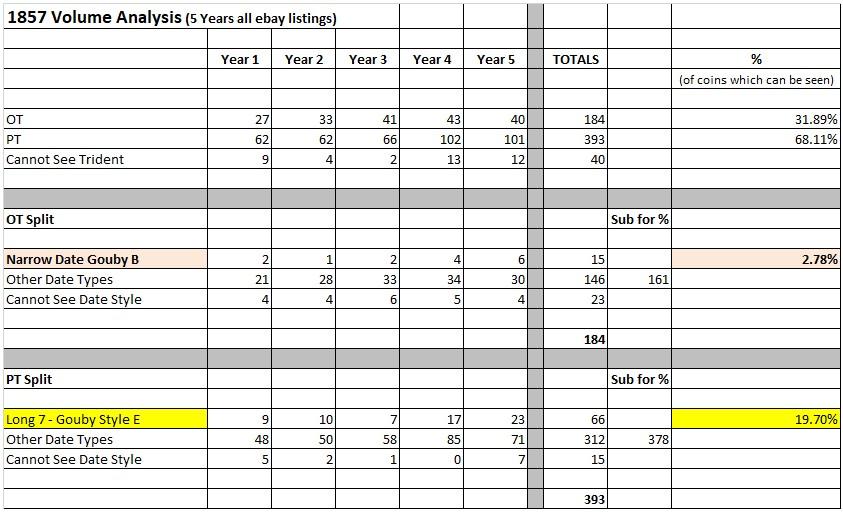-
Posts
786 -
Joined
-
Last visited
-
Days Won
84
Content Type
Profiles
Forums
Events
Downloads
Store
Gallery
Articles
Everything posted by alfnail
-
Yes, not easy to find those Richard. The Gouby Date Style A variations are far more common than either of the 9 fonts in my picture which you have shown above. The style that I called 'New Style X / Narrow 9' is also a perfect fit with the protrusions that can be seen on the 1860/59, see picture now attached. When I described it as 'narrow' it was because the entire date is only 9 teeth wide, which is less than all style A variations I have ever seen, and also half a tooth narrower than Gouby Style B (with the smaller numeral 9). I wasn't meaning that the numeral 9 is narrow in itself!! Hope that makes sense. It's another year that I must try to do some stats on from my 5-year ebay study. Problem is my wife keeps wanting holidays! 😉
-
I'm inclined to agree Richard. I think I have a couple of irregular shaped 'extra metal' pieces myself, will check when I'm back home.
- 11 replies
-
Thanks, it seems to be the sum of the❤, 😀 and 🏆 symbol scores, which I see I'm now at 697, one ahead of my 696 content score. Knowing me I will now start watching this, so not sure you've done me a favour!! I guess that no one will react to this post though, so you will be dragging me down to 697/697 😉
-
Agree that detached clover on it's own is not sufficient, there are definitely other dies which exhibit that. The clover is just a useful additional thing to check to give extra confidence after first looking for the obverse flaw and 4 colon positions on reverse. Those are usually the easiest things to see anyway. As you say Richard, the die flaw is the unique definitive identifier. Just one other thought, on the 8/? (similar die to 8/6), I have noticed that all 3 examples I have owned have the flaw clearly exiting bottom left of the C of VICTORIA. This is probably easier to see than whether the flaw starts between teeth or centre of a tooth, so should help members to identify the obverse die.....assuming it's always present!? Picture below illustrates
-
Thanks Blake, not really sure what that means, but it sounds like a compliment....much appreciated.
-
There is another 1858 smaller numerals (over)date obverse die which is paired with the exact same reverse as the 1858/6. Furthermore, it’s obverse looks very similar to the 1858/6 obverse!! Please carefully examine the set of 4 pictures below, which shows flaws, and overdates, for both these obverses. Note in particular that the flaw commences in between border teeth for the 8/6, but the flaw commences in the centre of a tooth for the other type of overdate. Also, the flaws exit the base of the C’s at different locations, which means 2 different dies. I would welcome views as to the other overdate e.g., is it an 8 over 8, or even a different type of 8/6 which this time has no bar down the left-hand side. I have just seen that there was one of these on ebay, and bought it:- 1858 Penny (WW) - Victoria British Copper Coin - Very Nice | eBay
-
Hi Richard, Well spotted. All examples of 1858/6 which I have seen have a die flaw running from between two border teeth to the top of the C of VICTORIA. Later strikes, like the one pictured top left, have a more developed flaw. Once you know that the 1858/6 is paired with a single reverse die you can then check for the reverse ‘features’, some of which are pictured below. You already mentioned the mis-aligned colon after DEF; the other colons (particularly after REG, see picture) are also mis-aligned. When examining all 4 sets of colon dot positions they become a good indicator of type. The 1858/6 reverse also has some additional ‘features’ which provide further confirmation of type; some of these are illustrated below e.g., detached clover, botched repair to G of REG, and protrusions around some letters in the legend (e.g., NN of BRITANNIAR). There are a couple of others which are less obvious. Clearly if the ebay pictures are half decent one can also see that date, and at least be able to see that the coin is a ‘smaller numerals’ variety. This in itself significantly narrows down the possibility that it may be an 8/6. BUT BEWARE!! – See Post Below
-
It's the combination of several things Mike. If you've got a decent example yourself you may be able to find them! It's knowledge like this that has helped pay for my own collection 😉.
-
Hi Mike, I have checked my past sales and find that I have owned 10 x 1858/6’s over the years. A long time ago I realised that, like some other overdate pennies in the YH series, it is often possible to identify an 1858/6 without being able to see the date. All of my 10 coins have had the same features on both obverse and reverse which indicates that this type is always struck from a single die pairing. Having said the above, and also just checked ebay where I can see at least 2 of these, I don’t think it is as common as an 1858/2 or an 1858/3, and far less common than combined 1858/7 types. For 1858 known varieties my ‘top of the head’ guess would be to place it roughly on a par with Bramah 26a No WW Missing Serifs, but definitely more common than the two ‘Large Rose’ types. Hope this helps. I really need to attempt some 1858 stats from my 5-year ebay study! P.S. The Ingram coin shown above is the type described by Michael Gouby as 1858/2
-
... and me too...
-
-
Obverse 2 Mike, 143 teeth, best way to be sure.
-

Coin prices continue to rise
alfnail replied to 1949threepence's topic in British Coin Related Discussions & Enquiries
No worries Mike. I had already started on 1858, whilst counting the large roses. Year 1 for 1858's has just over 400 coins, of which about 10% are No WW, and of those 2 are missing serifs. I haven't counted the other 4 years yet. I believe the missing serifs on the first I of BRITANNIAR only occurs when paired with a single obverse 'No WW' die (most examples have the same flaw after T of GRATIA). Several years ago, I tested several B26a coins, which I had accumulated over the years, against the wording found on Page 108 of Bramah, as follows:- "Another prolific source of minor variation is provided by the colons on the rev. Probably every die creates a colon variant and the only really satisfactory way of describing the position identifiably is by measurement and by the rather delicate indication afforded by projecting the line of each colon and so cutting the inscription opposite". Below is a picture of one of my B26a coins, with the projected lines as per Bramah. I tried to find the best pixel to identify the centre of each colon dot, and then drew a straight line through these centres to the opposite side of the coin. The teeth where the projected lines meet the opposite side are numbered (larger figures). Numbering starts from the tooth where the stem of the rose hits the border, and then works clockwise. The smaller numbers measure the distance between each pair of colon dots. I found that all my pieces had very similar sets of numbers i.e. within a range of 3 border beads, so I think Bramah's theory does work quite well at identifying individual reverse dies.....if one has the time to do this!!! Just thought that may be of some interest; I have reduced image size to meet the predecimal limit. -

Coin prices continue to rise
alfnail replied to 1949threepence's topic in British Coin Related Discussions & Enquiries
Hi Mike, I was wondering whether you might ask about the 1854 No Colons Bramah 17a one day! I'm afraid I haven't yet started on the 1854 analysis, partly because there are around 4,000 of those in my 5-year study; also, I was wondering what to attempt. Clearly the OT/PT split is relatively easy, but perhaps not that interesting. The OT no colons is clearly feasible, but I would also like to attempt the 1854/3. I'm thinking, however, that in the absence of a good additional identifier, I don't think the picture quality of most ebay listings will be detailed enough to allow me to do that one. I will do the No Colons count at some point and post on the forum. Thanks for asking, it's good to get a bit of pressure to make me do it. 😣 By the way, I have a spare copy of Bramah if anyone is interested, but it won't be for peanuts! -

Coin prices continue to rise
alfnail replied to 1949threepence's topic in British Coin Related Discussions & Enquiries
My 5 years count of ebay listings (2007-2011) found 13 large rose 1858's, from almost 3000 listings of 1858's. Of these 6 were small date and 7 were large date. I remember that when I first became aware of the large rose variety (courtesy of another member) I found the small date type first, and it then took me a good year to find the large date type. I don't think that many collectors were aware of the large rose varieties back during my study period, so this would suggest that the small / large date types have similar rarity. These stats probably go against what most collectors now believe to be the case. In any event, 13 large roses over 5 years compares with 70 x 1849's, so I think it is a pretty difficult type to locate, particularly in a decent grade. -
I'm thinking you probably have nice examples of all those Mike!! 😉
-
5% of hammer seems fair 🤑🤑🤑
-
Indeed Mike, they could employ at least a dozen people on this forum who would describe pennies better than they do. At least their pictures are good quality, so you can easily see all their mistakes 😜
-
They don't get any better! British and World Coins (7 & 8 June 2023): Lot 393 | Noonans Mayfair
-
Many thanks Dave, I have ordered the Cambridgeshire Coins 2023 album, actually got free postage by ordering through Az..... which saved a couple of £. Will have fun helping her with the collection.
-
My 8 year old granddaughter has just started collecting these and I was hoping someone might be able to recommend an album for her to keep her collection. I would prefer one which has writing which describes what is depicted on each coin. Thanks in advance
-
Hi Mike, A quick scan through those 76 images indicates to me that about half were rubbish / very low grade, but there were about 10 in VF or even a tad better, and there were 2 that looked in very collectable better grade. I attach those images fyi
-
For anyone who is interested in Victorian Young Head penny sub-varieties. Yesterday I managed to acquire an upgraded example for my 1857OT Gouby Style B (Narrow Date). I knew this sub-variety was very difficult to locate, so I decided to update my ‘5 year’ statistics (all ebay YH listings). Some may recall I shared these on the forum about 6 months ago when there was a discussion about different numeral 7 fonts, and the rarity of the ‘long 7’ type of font in particular. A close up of Gouby Style B is pictured below, together with the revised stats from my ‘5 year’ study period. On this date style the numerals 5 and 7 are very close, and both exhibit repairs which can be seen under the microscope, but not so clear on the poor reference example on Gouby’s website. The stats show that I found only 15 examples of this particular date style, making it far rarer than the ‘long 7’ Gouby Style E. For comparison, during the same period I found 76 x 1856OT’s, 59 x 1853PT’s and 50 x 1844DFF’s. Now I need to just move on 20 years and find a few more narrow date pennies!!
-

Coin prices continue to rise
alfnail replied to 1949threepence's topic in British Coin Related Discussions & Enquiries
When that supposed 1841 No REG Colon Proof sold at London Coins in 2009 I noticed that the obverse had some interesting features, in that the top bar of both I's in VICTORIA, and DEI, were very weak to the point of being missing; also the C of VICTORIA had been repaired. It made me think that the coin was perhaps NOT a Proof. Picture below refers. I have an example with exact same features in my own collection, which I can show tomorrow if anyone wishes to see. I would also sell my coin to anyone who wants it for far less than the $6.5K that Heritage sold theirs for in 2017.....and perhaps even less than the £900 that LC sold same coin for in 2009! 🤣 -

Coin prices continue to rise
alfnail replied to 1949threepence's topic in British Coin Related Discussions & Enquiries
No problem Mike, glad to help. It's always difficult deciding to part with one of your nicest pieces, but when you sell to someone who you know will cherish it then that always makes it much easier. I am constantly under pressure to sell my collection rather than leave it one day to those who will not understand..........and probably sell for a fraction of what they are worth!!😨














